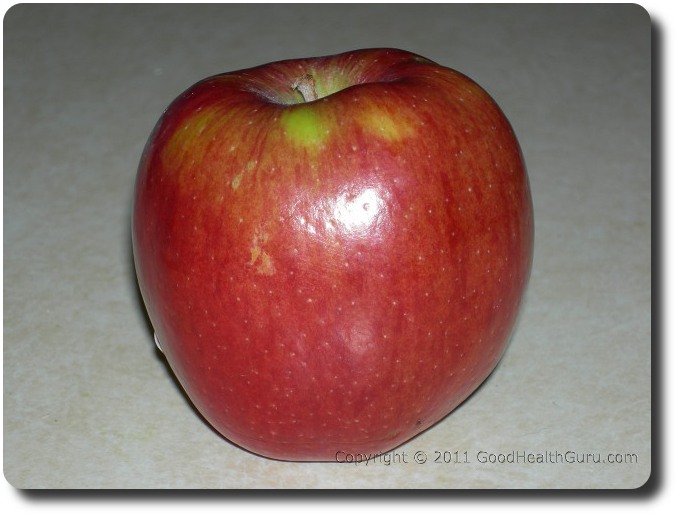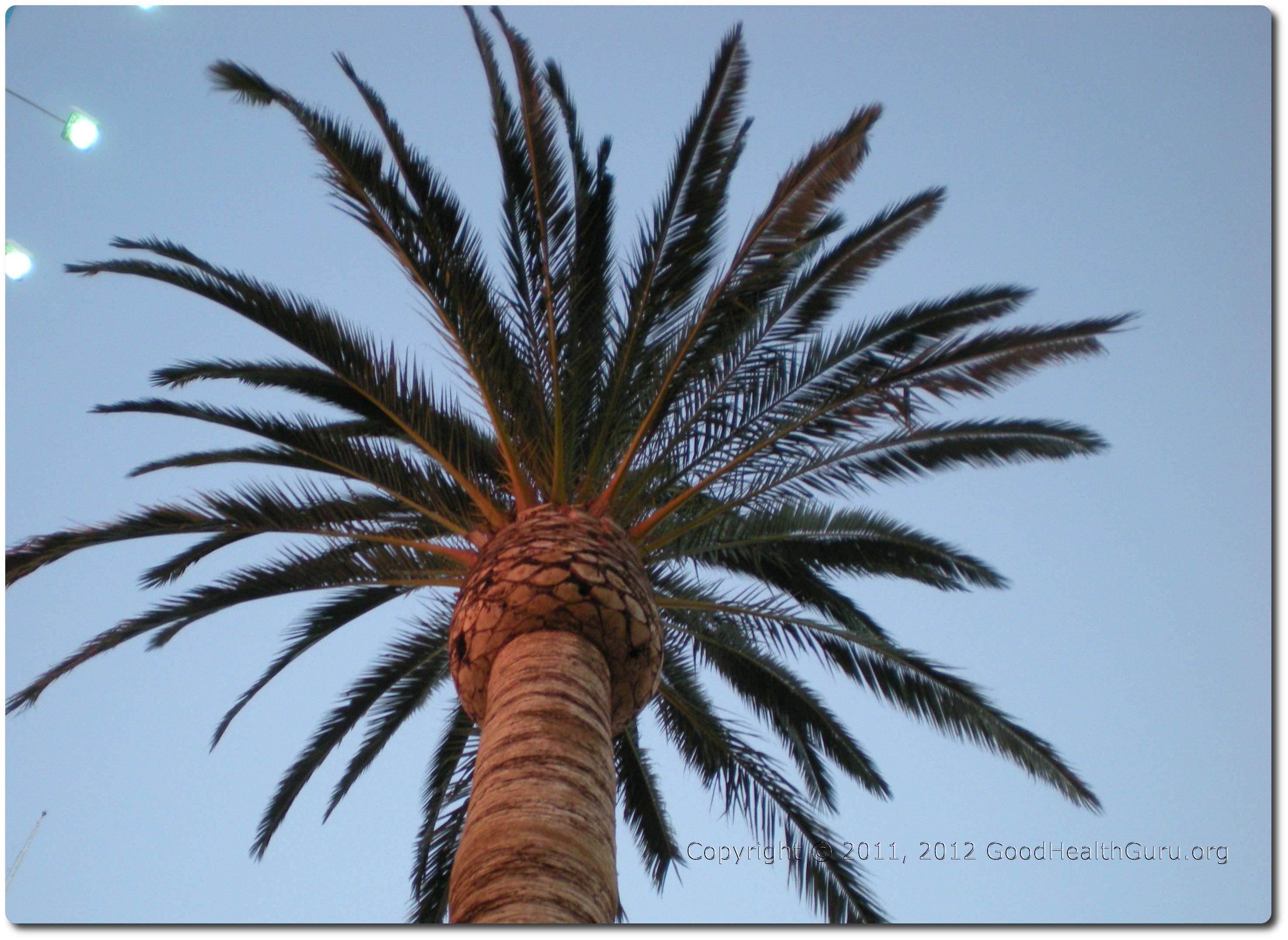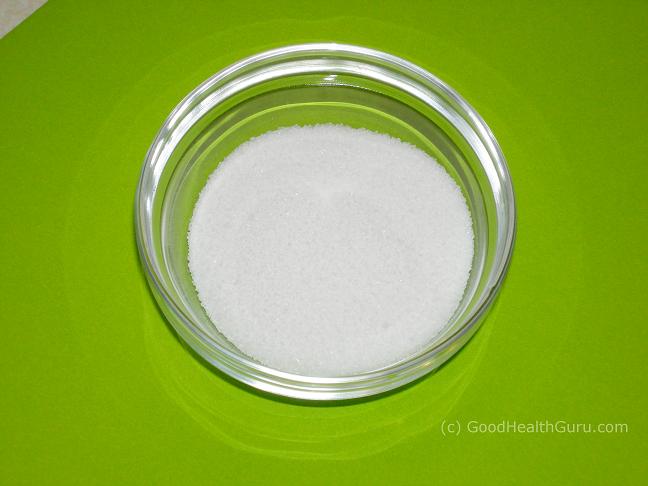
"You are what you eat."
Paraphrased fm. Anthelme Brillat-Savarin and Ludwig Andreas Feuerbach"Always consider the source of advice and the motivation behind it!" |
|
Topics:
At A Glance:

- How Healthy Are YOU? - in general, we tend to think we are healthier than we are so it often comes as quite a shock when we land ourselves in the sick house in need of major repair! Early changes in behavior often make the difference between long, enjoyable life and an early death.
- The Digestive Tract - from the mouth, through the stomach, and into the intestines, the human design has significant similarities to herbivores and distinct differences from omnivores and carnivores - factors which become important in determination of diet!
- The Truth of the Matter - we humans have a sense of instinct and taste which can tell us what to eat, and this sense may really be "in our blood". However, our sense works only if we don't override this feature with chronically bad choices. We seem to be unique in our ability to force ourselves to do that which we shouldn't.
- Summary - from a chemical standpoint, there is definite logic in recognizing how we are each unique in our abilities to process the things we eat. What is a helpful food for one person may really be a toxic entry for another. Learning more about ourselves is the most beneficial way to maintain our health.
[ expand/collapse all ]
How Healthy Are YOU?
 I hate to say it (sort of, ha ha), but the vast majority of people who think they are living healthy and treating themselves in a healthy manner really are not doing so, and this can be quite a shock as we learn more of how this is true.
I hate to say it (sort of, ha ha), but the vast majority of people who think they are living healthy and treating themselves in a healthy manner really are not doing so, and this can be quite a shock as we learn more of how this is true.
What we, as a people, have been taught is healthy through general education and the media is largely just misinformation which comes either from a shortage of real understanding or from a conflict of interest (e.g. a group needs to sell its products to be profitable so it creates an advertising campaign that gradually "educates" consumers on the "healthy" benefits of its products while ignoring its not-so-healthy product features)!
In order to understand what's truly healthy; however, we need to take a brief examination of human anatomy, and this view focuses primarily with the digestive tract.
The Digestive Tract:
 The human digestive tract is actually rather unique when considered against all other animals so as we examine it, we need to compare and contrast it with other mammals in order to make sense from the comparisons.
The human digestive tract is actually rather unique when considered against all other animals so as we examine it, we need to compare and contrast it with other mammals in order to make sense from the comparisons.
The Mouth -
Let us first consider the mouth of a familiar carnivore -- the dog -- to see how it stacks up against the human mouth. The dog also happens to be a good representation of carnivorous as a whole.
In our friendly family dog, we see a jaw that is elongated with a mouth that opens quite wide in relation to its head size, the purpose of which is to grab, hold, kill, and tear away at its prey. It has a simple hinge jaw joint which opens and closes but really has no appreciable forward or side-to-side motion. This action allows a carnivore's cheek molars to slide past each other up and down acting like knives slicing meat -- a very effective action since the molars do not come to rest on top of each other surface-to-surface. The gaps in between the carnivore's teeth are wide enough to keep meat and food fibers from getting stuck in between. Its tongue is thin, and its canine teeth are very long for piercing while its molars are triangular with jagged peaks to enhance the meat slicing motion. A dog's saliva, like that of all carnivores, is only a lubricant containing no digestive enzymes since food is usually chewed slightly, if at all, and frequently gulped down whole.
In contrast, humans and herbivores have shorter jaws and thicker tongues. These tongues are used for mashing food around the mouth which mixes saliva well with the food and allows it to frequently contact the chewing surfaces. Canine teeth are less prominant in both humans and herbivores, and sometimes they are missing entirely. The molars of both humans and herbivores are much flatter with small ridges, and they contact surface-to-surface to make a grinding action (rather than slide past one another in a cutting action the way they do in the carnivore). Many herbivores also grate their teeth back and forth across one another to enhance the grinding process, and humans do this as well. The saliva of both humans and herbivores contains varying enzymes (depending upon species) which are used to aid in the digestion of plant material.
The Esophagus and Stomach -
A carnivore's esophagus is mucous lined and large enough to handle chunks of food without choking. Its stomach is a singular sack which accounts for about 2/3 of the volume of the entire digestive tract allowing it to hold large amounts of food at one time (the time of the kill). It is a very acidic stomach with a pH ranging between 1 and 2, and this serves to rapidly break down food as well as destroy unwanted contaminants.
In humans, our eshopagus is mucous lined and narrow indicating that our food must be well chewed so we do not choke (and certainly not swallowed whole as carnivores do). The human stomach is a single chamber which encompasses roughly 1/4 of the total digestive tract, and while it is acidic, it is not as much so as a typical carnivore. The pH of a human stomach is between 4 and 5. This is very similar to herbivores though herbivores have a couple of variants. In some cases we see complex, multi-chambered stomaches while in others we see simple stomachs with just one chamber just like the human one. In all cases of herbivores and humans though, food must be well chewed prior to swallowing.
The Small Intestine -
When it comes to the small intestine, the carnivore does not need much length. The process of absorbing food material, primarily protein, is highly efficient so the small intestine is short ranging from about five (5) to six (6) times the length of the body.
In herbivores, however, the complex nature of digesting plant material requires considerably more time and space so the small intestine is longer ranging from ten (10) to twenty (20) times the length of the body. This is precisely what we see in humans where the small intestine is approximately ten (10) times the length of the body since more time and space are needed for digesting foods suitable to the human.
The Colon -
The final stop in digestion is the colon, and in the carnivore, the colon is fairly short with a diameter matching that of the small intestine. It doesn't make for a big reservoir, and it doesn't need to since all it really does is re-absorb water and salt.
In herbivores and humans; however, the colon is long and is much wider than the small intestine. The function of the herbivore's colon is to complete the digestive process by fermenting vegetation, producing and absorbing vitamins, and re-absorbing electrolytes and water. In some herbivores, the colon is also pouched due to how the muscle fibers line the wall, and humans exhibit this pouched trait as well. The human colon is there to absorb water and electrolytes, and some vitamins which are produced within though they do not seem to be absorbed. There is also a significant amount of fermentation and absorbtion of plant material which takes place in the human colon -- something previously not understood but currently being learned and investigated further.
Regarding Omnivores -
Omnivores make for an interesting category in that they are very much like carnivores in design except for a few subtle differences, the most notible of which is the existence of both the flat, grinding molars and the sharp, cutting pre-molars. Otherwise, they have the same built-in ability to stalk prey, grab it by mouth and claw to kill it, tear the flesh with piercing long canines, and so on -- features humans lack completely.
Digestive Summary -
Collectively, this provides us enough information to recognize with clarity how the human being is most like the herbivore in design and not particularly like a carnivore, nor are we true omnivores -- facts that are critical to understanding the human's correct diet.
The Truth of the Matter:
 So the question then becomes, what should a human being actually eat?
So the question then becomes, what should a human being actually eat?
Ultimately this is a more challenging question than, at first, it might seem. You see, animals are guided by instinct, and that instinct tells them what to eat. Humans do have a similar instinct, but we also have the capability of overriding it. For example, when we are scared of a situation -- a job interview maybe -- we might have the instinct to run, but we can stop ourselves from doing so. The animal, however, must run.
Babies often shun particular foods, but their parents often disguise those foods and feed them to the baby anyway until, over time, the baby or young child develops a taste for them. These aquired tastes make it difficult for our body's instincts to guide us in our diets.
Over long periods of time, this, along with circumstances guided by necessity, seem to have caused humans to adjust physiologically to where we tolerate different diets which is why it becomes complicated. For some people, they cannot properly digest or process land-based meats while other people seem to thrive on them in a relatively healthy manner. So despite our design, some evolutionary changes seem to have occurred. However, one constant does appear to remain, and that is that the base human diet requires plenty of raw foods -- particularly greens and fruits.
What's the Difference -
Beyond the greens and fruits, it is very clear humans do not handle processed food well at all. In short, if it is processed (in other words, if it did not start out naturally the way you see it now), it is NOT truly food. And if it is NOT truly food, but we consume it anyway, we begin causing problems in our bodies as they attempt to digest it because our bodies are not equipped to properly do so; therefore, we need to be extremely careful about consuming things unnatural.
So what is the difference with people and their varying diets?
One of the better starting points I have seen to help determine an appropriate diet for us is a diet based upon blood type. This concept, advanced substantially in recent years by the work and study of naturopath Dr. Peter D'Adamo, attempts to lay out appropriate foods by determining how they interact with blood components. The basis of this dietary concept has much to do with the evolution of blood types over time, and the evolutionary patterns have a great deal to do with where people resided (or still reside).
Blood -
To understand this better, we need to learn a few basics about blood. First of all, there are four main classifications of blood types:
A, B, AB, and OThe classes are defined by whether or not the red blood cells carry antigens on them. - Type A has the "A" antigen
- Type B has the "B" antigen
- Type AB has both the "A" and "B" antigens
- Type O has neither of the antigens
An antigen is something that causes a negative response from the immune system. The body views it as something which doesn't belong where it is so it creates an antibody to neutralize the threat. Now, normally a body doesn't create antibodies against its own antigens, but it WILL create them against foreign antigens which is why we also see the following: - Type A's plasma (what the blood cells circulate in) contains the antibody against the "B" antigen
- Type B's plasma contains the antibody against the "A" antigen
- Type AB contains no antibodies in its plasma
- Type O's plasma contains antibodies against both the "A" and the "B" antigens
There is a third antigen which may be present on the surface of the red blood cells, and this is called the Rhesus factor or the Rh factor. If you have it, then your blood is Rh+, and if it is missing, your blood is Rh-. This sets up the next piece which has to do with the age of the four blood types.
It was once thought that type O was the earliest form likely because of its lack of antigens; however, more recent and improved understanding of archeological DNA evidence has shown blood type A to be the original type having existed many millions of years. Somewhere around 3.5 million years ago, blood type B showed up and is likely a mutation of the A antigen. Blood type O doesn't actually show up until approximately one (1) million years ago, and very interestingly, blood type AB shows up only within the last thousand years. - Type A > 3.5 million years old
- Type B ~ 3.5 million years old
- Type O ~ 1 million years old
- Type AB ~ 1000 years old
Blood Type A -
This all makes much more sense when we recognize type A as the original blood type. Having a system essentially on par with that of an herbivore, type A is the original vegetarian. Having to endure some radical changes in food sources is a given, and it has made them slightly more tolerant to some meats, but ultimately type A's developed to metabolize carbohydrates far better than the other blood types. Type A's, B's, and AB's (except the A2 group) carry more of a blood clotting factor in their blood (factor VIII) and are less likely to have hemophilia but are at greater risk of blood clotting diseases. Type A's should be predominantly vegetarian.
Blood Type B -
Type B has migrated through some of the harshest climatary changes emerging to become the most tolerant dietary types handling vegetables, fruits, grains, and meats nearly equally well. Type B's, A's, and AB's (except the A2 group) carry more of a blood clotting factor in their blood (factor VIII) and are at lower risk of hemophilia but greater risk of blood clotting diseases.
Blood Type AB -
Type AB is the most recent blood type existing little more than a thousand years. It contains both the A and B antigens on the blood cells and seems to tolerate some meat in the diet better than the type A does, but AB's still lack the overall dietary versatility of the type B. Type AB's, A's, and B's (except the A2 group) carry more of a blood clotting factor in their blood (factor VIII) and are at lower risk of hemophilia but greater risk of blood clotting diseases.
Blood Type O -
Type O is one of the more recent blood types and has grown to tolerate more meat with fewer fruits and vegetables often as a result of having been both land-locked and interbred. Type O's contain no antigens on their blood cells; however, they carry both A and B antibodies in the plasma. They are more susceptible to diseases like cholera, E. coli infection, peptic ulcers and/or gastric cancer from H pylori than other blood types.
Summary:
 There is more information on blood types and related foods throughout the various pages of this website. It is interesting to note how, as anthropologists learn more about blood types through recent discoveries, applicable dietary patterns begin making sense with a pattern of microevolution leading down four distinct trails.
There is more information on blood types and related foods throughout the various pages of this website. It is interesting to note how, as anthropologists learn more about blood types through recent discoveries, applicable dietary patterns begin making sense with a pattern of microevolution leading down four distinct trails.
From a chemical standpoint, there is also logic to these paths in defining how certain blood types would be able to handle certain foods better than other blood types. When blood clots more readily as it does in types A, B, and AB, for example, these dietary types could well have more trouble carrying animal proteins throughout the system whereas thinner blood like type O may be more tolerant of animal proteins and their thickening effects on blood.
Regardless of where we have emerged today, however, it is clear humans as a singular group have not lost their need for green, leafy vegetable in their diets to aid the digestive process. Our long intestinal tract maintains the herbivorous design which exists to provide enough time for quality processing of plant matter. Exclusive dieting on animal proteins without providing enough greens to push them through always seems to lead to severe intestinal problems ranging from inflammation to cancer. For type O's who can thrive on fewer greens and more animal protein, care must be taken to not exclude greens and to keep animal proteins as a balanced, rather than an overloaded, portion of the diet.
|
|



 I hate to say it (sort of, ha ha), but the vast majority of people who think they are living healthy and treating themselves in a healthy manner really are not doing so, and this can be quite a shock as we learn more of how this is true.
I hate to say it (sort of, ha ha), but the vast majority of people who think they are living healthy and treating themselves in a healthy manner really are not doing so, and this can be quite a shock as we learn more of how this is true.
 The human digestive tract is actually rather unique when considered against all other animals so as we examine it, we need to compare and contrast it with other mammals in order to make sense from the comparisons.
The human digestive tract is actually rather unique when considered against all other animals so as we examine it, we need to compare and contrast it with other mammals in order to make sense from the comparisons.
 So the question then becomes, what should a human being actually eat?
So the question then becomes, what should a human being actually eat?
 There is more information on blood types and related foods throughout the various pages of this website. It is interesting to note how, as anthropologists learn more about blood types through recent discoveries, applicable dietary patterns begin making sense with a pattern of microevolution leading down four distinct trails.
There is more information on blood types and related foods throughout the various pages of this website. It is interesting to note how, as anthropologists learn more about blood types through recent discoveries, applicable dietary patterns begin making sense with a pattern of microevolution leading down four distinct trails.